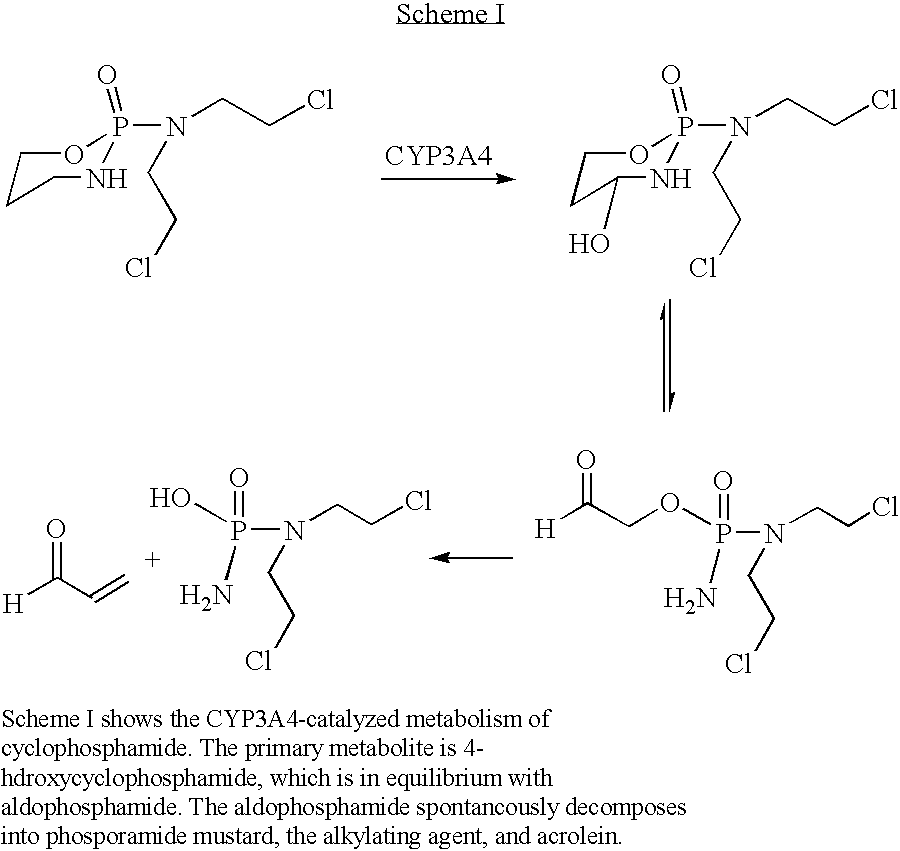Biocatalytic solgel microarrays
a biocatalytic and solgel technology, applied in the field of biocatalytic solgel microarrays, can solve the problems of multiple chemicals interacting to produce unexpected effects, creating health problems, and fatal heart arrhythmias, and achieve the effect of reducing side effects and improving pharmaceutical benefits
- Summary
- Abstract
- Description
- Claims
- Application Information
AI Technical Summary
Benefits of technology
Problems solved by technology
Method used
Image
Examples
example 1
Solgel Enzyme Microarrays
[0056]Solgel micromatrices containing active enzymes were stabilized on glass at near-neutral pH and room temperature. A multi-well bilayer of polydimethylsiloxane (PDMS) was used to support the matrix array and contain the reaction medium. The enzymes in the solgels were catalytically representative of their solution counterparts; a good linear correlation (R=0.98) was obtained when the activity of the solgel enzymes were plotted against the activity of the soluble hydrolases. The solgel arrays were reusable and exhibited greater thermostability when compared to soluble enzymes.
[0057]The enzyme-containing solgel arrays were further miniaturized by spotting micromatrices on microscope slides. An enzyme-containing solgel microarray was generated containing 300 solgel micromatrices on a glass microscope slide.
example 2
P450 Microarrays
[0058]Sol solution was prepared by mixing 25 μl methyltrimethoxysilane (MTMOS) with 10 μl polyvinyl alcohol (PVA, MW 10,000) in distilled water (10% w / w). The resulting sol had a pH of 2, and the formed gel was then neutralized quickly by washing with aqueous buffer. To prevent detachment of solgel matrices from the glass slide and to make hemispherical matrices, MTMOS solution (pH7) was spin coated (2 μl at 3000 rpm for 30 s) onto the glass. The reactions were performed in arrays containing 150 solgel matrices, each with a volume of 1 μl prepared using a manual micropipetter. P450 activity was tested as follows: 0.5 μl green fluorescent substrate (2 mM, DBOMF, a fluorescein analog), 2.5 μl NADP+ (10 mM) and 2.5 μl regeneration system (glucose 6-phosphate dehydrogenase plus glucose 6-phosphate) were added to 94.5 μl phosphate buffer (200 mM, pH 8). P450 activity was assayed by spotting 5 μl applied composition solution onto the 1 μl solgel matrix containing the P450 ...
example 3
Cell Growth in Collagen-Gel Droplets and Pro-drug Activation
[0062]Solgel matrices were prepared as described above, except for one modification involving spin coating. Specifically, the MTMOS spin coat can be hydrophobic and can be insufficiently wetted by the collagen gel, thereby resulting in poor attachment of the collagen gel onto the slide. To prevent detachment of solgel matrices from the glass slide and to produce hemispherical matrices, polymaleic anhydride-alt-α-olefin (PMA-OL) in toluene was spin coated (2 ml at 3000 rpm for 30 s) onto the glass. The P450 reactions (involving CYP3A4) were then performed in arrays containing 40 solgel matrices, each with a volume of 1 μl prepared using a manual micropipetter. For the P450 reaction, 5 μl substrate solution (1 mM cyclophosphamide and 2 mM NADPH) was spotted on the P450 solgel and incubated for 2 h at 30° C. to produce 4-hydroxycyclophosphamide as a product toxic to MCF7 breast cancer cells31. Cyclophosphamide is a known prodr...
PUM
| Property | Measurement | Unit |
|---|---|---|
| volume | aaaaa | aaaaa |
| volume | aaaaa | aaaaa |
| volume | aaaaa | aaaaa |
Abstract
Description
Claims
Application Information
 Login to view more
Login to view more - R&D Engineer
- R&D Manager
- IP Professional
- Industry Leading Data Capabilities
- Powerful AI technology
- Patent DNA Extraction
Browse by: Latest US Patents, China's latest patents, Technical Efficacy Thesaurus, Application Domain, Technology Topic.
© 2024 PatSnap. All rights reserved.Legal|Privacy policy|Modern Slavery Act Transparency Statement|Sitemap

